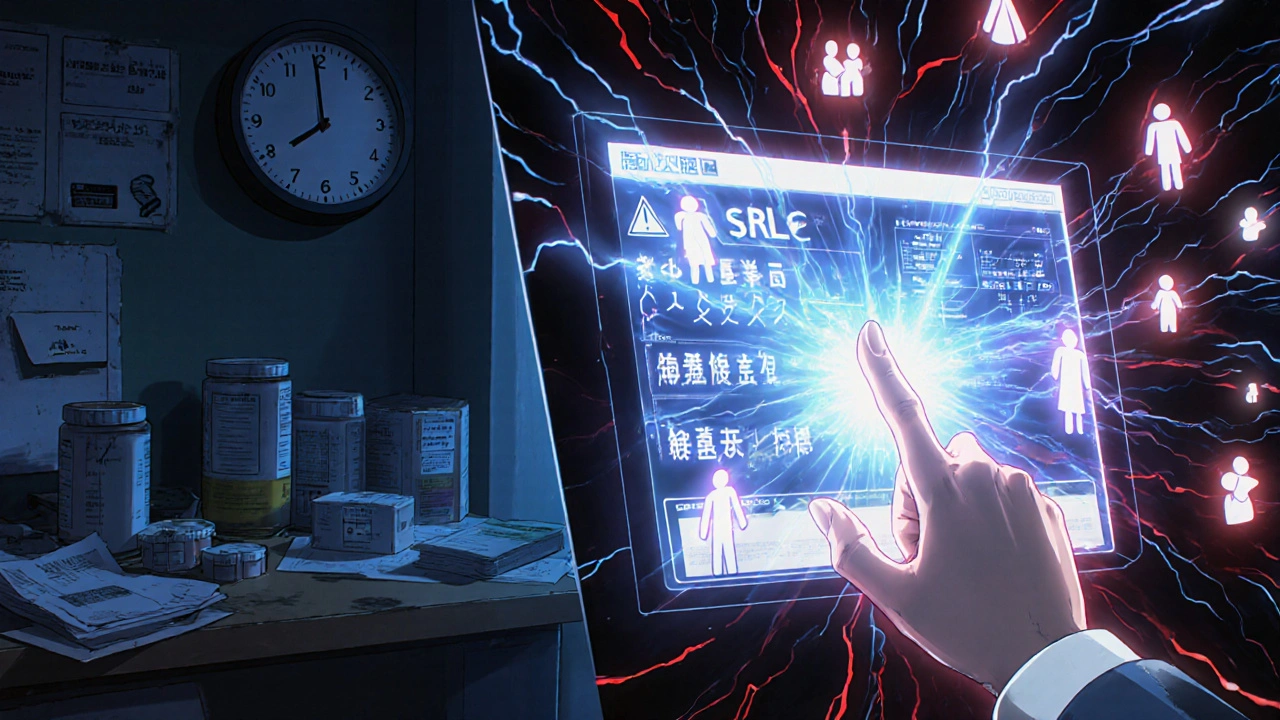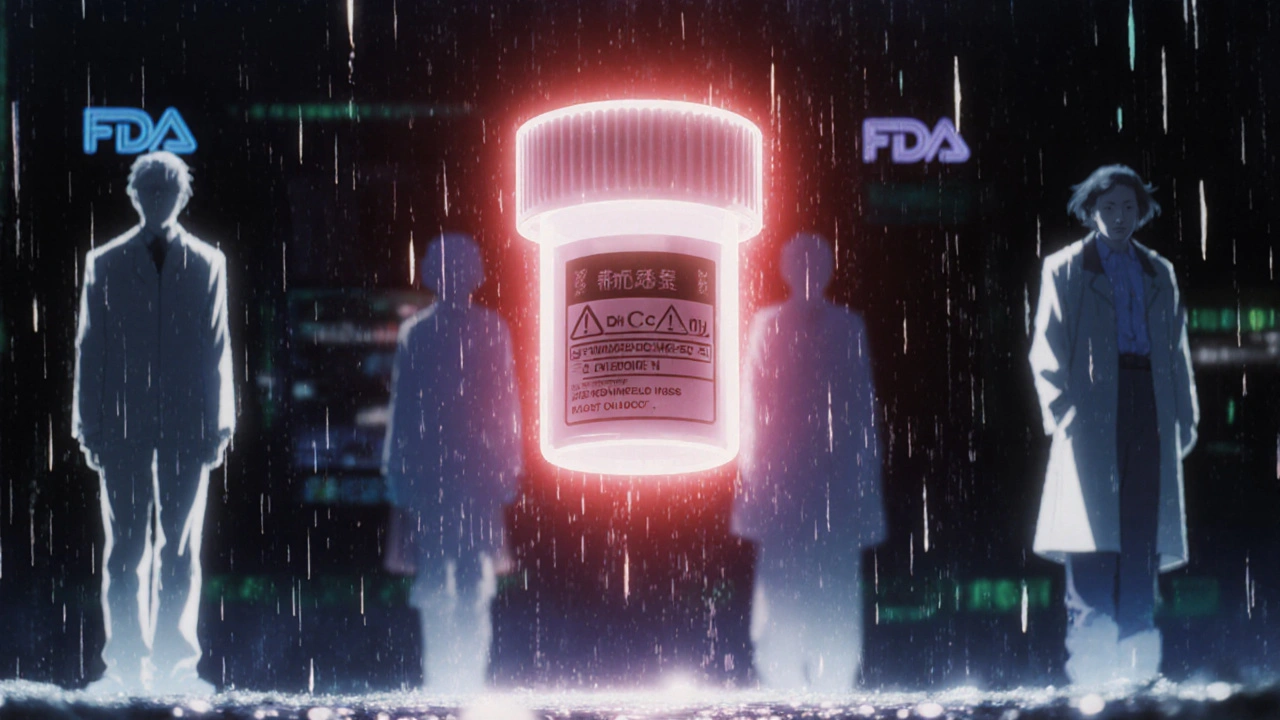Boxed Warning Tracker
Search Results
Boxed warning history for your search
Enter a drug name to see boxed warning history
Try: Fluoroquinolones, Chantix, Aduhelm, Avandia
When a drug carries a boxed warning, it’s not just another footnote. It’s the FDA’s loudest possible alarm bell - a black-bordered, bolded, bullet-pointed red flag that says: this medicine can kill you. And those warnings don’t stay the same. They change. They get stronger. Sometimes, they disappear. If you’re a prescriber, pharmacist, or even a patient managing long-term medication, missing a label update could mean missing a life-threatening risk.
What Exactly Is a Boxed Warning?
A boxed warning, also called a black box warning (BBW), is the strongest safety alert the U.S. Food and Drug Administration can require on a prescription drug label. It’s placed right at the top of the Prescribing Information section, before even contraindications or general warnings. You can’t miss it - it’s surrounded by a thick black border, uses bold uppercase headers, and lists risks in bullet points. This isn’t just a suggestion. It’s a regulatory requirement under 21 CFR 201.57(e). These warnings don’t come from early clinical trials. They emerge after real people start using the drug. That’s why the median time between a drug’s approval and its first boxed warning is now 11 years - up from 7 years in the 1990s. The FDA doesn’t wait for perfect data. It waits for enough real-world harm to prove the risk is serious enough to demand attention.Why Do Boxed Warnings Change?
Not all boxed warnings are created equal - and they don’t stay static. The FDA tracks every change through its Drug Safety-related Labeling Changes (SrLC) database, which has been active since January 2016. Since then, over 1,800 labeling updates have been logged. Of those, 147 involved new or revised boxed warnings. Changes fall into three categories:- New warnings (29% of changes between 2008-2015): These add a warning that didn’t exist before. For example, fluoroquinolone antibiotics got a boxed warning in 2008 for tendon rupture after dozens of cases piled up.
- Major updates (32%): These expand the warning - adding new populations at risk, new monitoring requirements, or clarifying the severity. In 2022, fluoroquinolone labels were updated again to include persistent, disabling symptoms that can last months or years.
- Minor updates (40%): These tweak wording, add context, or correct inaccuracies. Sometimes, they remove outdated language. The Chantix (varenicline) psychiatric risk warning was removed in 2016 after further review showed the risk was lower than initially thought.
Who Gets Affected - And How?
Boxed warnings don’t just sit on a label. They change how doctors prescribe and how patients take their meds. A 2022 poll on Sermo, a physician forum, showed that 68% of doctors changed how they prescribed fluoroquinolones after the tendon rupture warning. Internists cut back the most. Family doctors saw a 40% drop in Chantix prescriptions after its 2009 psychiatric warning - until it was removed in 2016, and prescriptions bounced back. But here’s the problem: most clinicians don’t check for updates regularly. A 2017 FDA survey found that while 87% of providers look for boxed warnings when starting a new drug, 63% admit they ignore updates to existing ones. That’s dangerous. A warning that was once “possible risk” might now say “life-threatening.” And patients? Only 35% of pharmacies consistently hand out Medication Guides - the patient-friendly summaries that explain boxed warnings in plain language. When they do, patient understanding jumps from 42% to 78%.
Which Drugs Have the Most Boxed Warnings?
Some drug classes are more likely to carry these warnings than others. Based on FDA data through 2024:- Antipsychotics: 87% carry a boxed warning - mostly for increased death risk in elderly dementia patients.
- Anticoagulants: 78% - because bleeding can be sudden and fatal.
- Diabetes medications: 63% - including drugs like Avandia, which got a boxed warning for heart attack risk in 2007. Many endocrinologists still argue it’s too cautious.
How to Track Updates - The Real Way
You can’t rely on drug reps, email alerts from your EHR, or even your pharmacy’s system. Too many false alarms. Too many missed changes. The only reliable source is the FDA’s SrLC database. It’s free. It’s public. And it’s updated weekly. But it’s not user-friendly. Pharmacists report needing 3-5 hours of training just to navigate it effectively. Here’s how to use it:- Go to the FDA’s SrLC database page.
- Search by drug name, active ingredient, or specific section (select “BOXED WARNING”).
- Filter by date range - especially if you’re reviewing a drug you’ve prescribed for years.
- Read the full labeling change document. Don’t just skim the summary. Context matters.
The Big Problem: Too Late, Too Vague
Critics say the system is broken. Dr. Donald Light’s 2010 study found 71% of serious drug risks were identified more than five years after approval. By then, thousands had been exposed. And sometimes, the warnings themselves are unclear. The FDA’s 2020 review found 22% of recent labeling changes lacked enough clinical context. For psychiatric warnings - like those on SSRIs - many don’t specify what monitoring should look like. “Watch for suicidal thoughts” isn’t helpful if you don’t know how often, or how to ask. Even the FDA admits it. In its 2023 Strategic Plan, it pledged to modernize the boxed warning format by 2026. Pilot tests are already underway - testing clearer icons, color coding, and digital alerts that link directly to monitoring guidelines.
What’s Next?
The future of boxed warnings is digital. The FDA’s $25 million investment in the OHDSI consortium aims to cut the 11-year lag between drug approval and warning issuance down to under five years. That’s huge. Real-time data from millions of electronic health records could catch risks before they become epidemics. Meanwhile, specialty pharmacies that track these updates closely have seen 27% fewer medication-related adverse events. Community pharmacies? Only 38% have formal monitoring systems. The message is clear: if you’re responsible for prescribing, dispensing, or managing medications, you can’t afford to ignore label changes. A boxed warning isn’t just a legal requirement. It’s a living document - updated by real-world harm, and meant to save lives.Notable Recent Boxed Warning Updates
- Aduhelm (aducanumab-avwa) - March 2023: Added warning for amyloid-related imaging abnormalities (ARIA), including brain swelling and bleeding.
- Fluoroquinolones - December 2022: Expanded warning to include persistent, disabling side effects affecting tendons, muscles, joints, nerves, and the central nervous system.
- Chantix (varenicline) - July 2009: Added psychiatric risk warning. Removed in 2016 after re-evaluation.
- Avandia (rosiglitazone) - November 2007: Added cardiovascular risk warning. Still controversial among endocrinologists.
What You Should Do Now
If you’re a clinician:- Check the SrLC database at least once a month for drugs you prescribe regularly.
- Don’t assume a warning hasn’t changed just because it’s been there for years.
- Use Medication Guides when available - they improve patient understanding by nearly 90%.
- Ask your pharmacist: “Has this warning changed since I started taking it?”
- Request the Medication Guide every time you refill.
- Don’t stop your meds because of a warning - talk to your provider. Many boxed warnings still allow safe use with monitoring.
What does a boxed warning look like on a drug label?
A boxed warning appears as a black-bordered rectangle at the top of the Prescribing Information section. It has a bold, uppercase header like “BLACK BOX WARNING: RISK OF DEATH,” followed by bullet points listing specific risks - such as sudden death, severe liver damage, or suicidal behavior. The format is strictly regulated by the FDA to ensure it stands out from all other text.
How often does the FDA update boxed warnings?
The FDA updates boxed warnings whenever new safety data emerges - which can be monthly or less frequently. Since January 2016, the FDA has processed over 1,800 labeling changes, including 147 new or revised boxed warnings. There’s no fixed schedule; updates happen as soon as the agency determines a risk is significant enough to warrant action.
Can a boxed warning be removed?
Yes. Boxed warnings can be removed if follow-up studies show the risk was overestimated or no longer applies. The most notable example is Chantix (varenicline), which had a psychiatric risk warning added in 2009 and removed in 2016 after further analysis found the risk was lower than initially reported. Removal requires new clinical evidence and FDA review.
Are boxed warnings only used in the U.S.?
No. While the U.S. uses the formal black box format, other countries have similar systems. The European Medicines Agency uses a “black triangle” symbol (▼) to mark newly approved drugs under enhanced monitoring. However, only the U.S. FDA requires the specific black-bordered, bullet-pointed boxed warning format.
Why do some doctors ignore boxed warnings?
Many doctors say the warnings are too vague, come too late, or restrict useful medications. A 2023 Medscape poll found 52% of physicians believe some boxed warnings are overly cautious - especially for drugs like Avandia, where the cardiovascular risk may not outweigh benefits for certain patients. Others simply don’t have time to track updates. Only 38% of community pharmacies have formal systems to monitor labeling changes.
How can patients find out if a warning has changed?
Patients should ask their pharmacist for the most recent Medication Guide every time they refill a prescription. These guides summarize boxed warnings in plain language. They can also check the FDA’s Drugs@FDA website for the latest label, or search the SrLC database using the drug’s brand or generic name. If in doubt, always talk to your doctor - don’t stop medication based on a warning alone.

